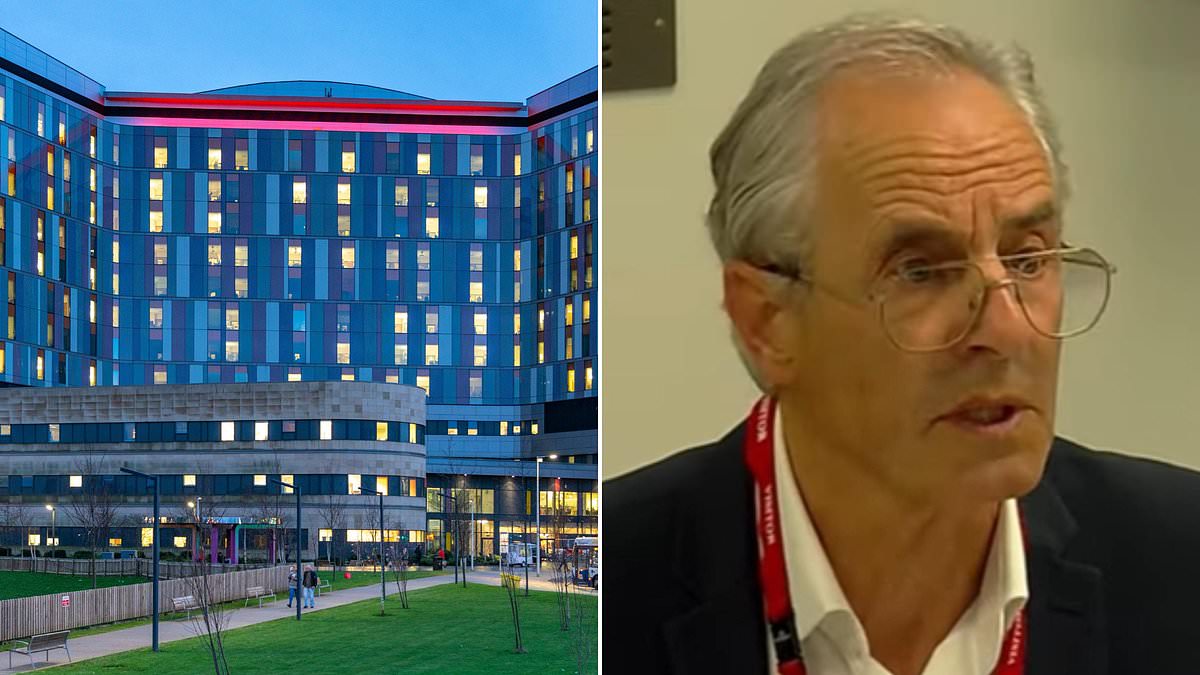A water safety expert said he was ‘shocked’ to learn Scotland’s super-hospital has been built near a sewage plant.
An inquiry into the Queen Elizabeth University Hospital in Glasgow heard that a microbiologist brought in following a spate of infections said its location next to wastewater treatment works was a risk to vulnerable patients.
Dr Tom Makin runs the Makin and Makin Consultancy which provides water quality advice to companies and healthcare facilities.
Yesterday, he told the inquiry that the proximity of the sewage works ‘is still a risk today’ and tests should be carried out to see if airborne particles are getting into the hospital.
Dr Makin made his comments during evidence to the Scottish Hospitals Inquiry yesterday.
He was contacted by NHS staff in Glasgow in April 2018 and asked to provide advice after contamination was found in the hospital water supply.
Dr Makin said: ‘I first saw the hospital and its water system on 10th May 2018. I do recall approaching it for the first time and discovering that it had been built next to a sewage treatment facility. I was shocked by this
‘I was very puzzled as to why it had been allowed given that the hospital contained very immunocompromised patients.
I was concerned regarding the possible implications for the hospital and its patients arising from potential increased transmission of microorganisms from the sewage treatment facility.
Airborne transmission of microorganisms from sewage treatment works is well documented.
‘You are dealing with faecal material and there’s agitation in the process to break down the sewage which generates aerosols that can move fair distances.
‘To actually have a hospital that contained highly immunocompromised patients so close seemed an unacceptable risk. I was surprised.’
The hospital and its predecessor, the Southern General are next to the Shieldhall treatment works, which were built over 100 years ago.
A previous independent review of the QEUH found no issues with the proximity of the sewage works.
But asked if he believed the treatment plant is still a risk to the QEUH, Dr Makin said: ‘If the sewage treatment works is still there, then I would say it’s still a risk factor.
‘Given there’s been so much testing done of the water system in the hospital, it would also be appropriate to look at airborne transmission around the sewage treatment works in the vicinity of the hospital.
‘You could do air sampling and water run-off sampling and see if that is getting into the environment of the hospital.’
The inquiry is currently investigating the construction of the QEUH campus in Glasgow, which includes the Royal Hospital for Children.
It was launched in the wake of deaths linked to infections there, including that of 10-year-old Milly Main.
The inquiry also heard that the water system at the campus was filled more than 12 months before it opened to patients.
Dr Makin said ‘That’s an unusually long time to have a water system filled before it goes into operational use. I was quite surprised.
‘If you do it too early, and I would consider a year prior to patients moving in too early, then that leaves it open, the opportunity, for contamination to occur.’
The inquiry, taking place before Lord Brodie in Edinburgh, continues.
